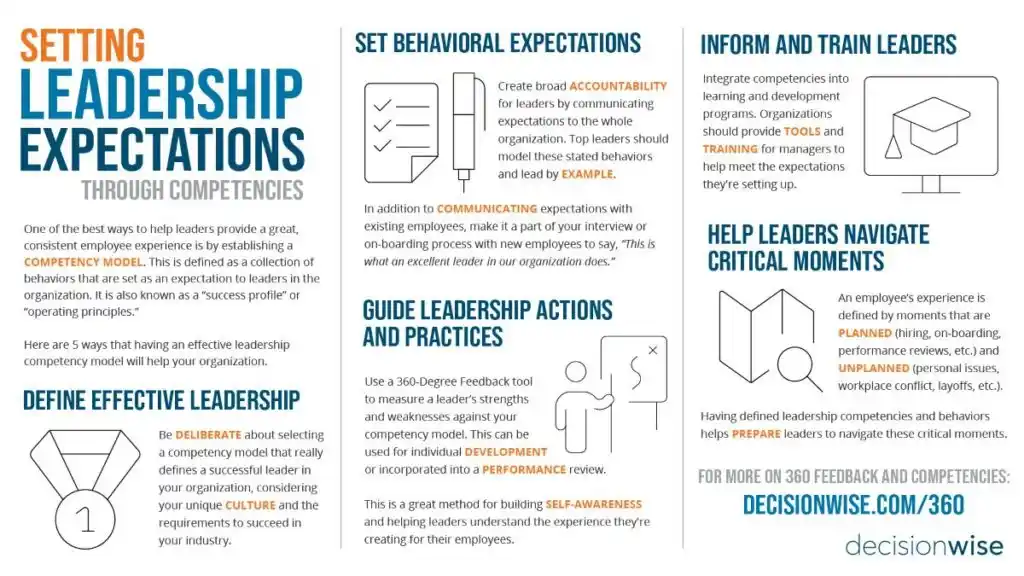One of the best ways to help leaders provide a great, consistent employee experience is by establishing a competency model. This is defined as a collection of behaviors that are set as an expectation to leaders in the organization. It is also known as a “success profile” or “operating principles.”
Here are 5 ways that having an effective leadership competency model will help your organization.
Define Effective Leadership
Be deliberate about selecting a competency model that really defines a successful leader in your organization, considering your unique culture and the requirements to succeed in your industry.
Set Behavioral Expectations
Create broad accountability for leaders by communicating expectations to the whole organization. Top leaders should model these stated behaviors and lead by example.
In addition to communicating expectations with existing employees, make it a part of your interview or on-boarding process with new employees to say, “This is what an excellent leader in our organization does.”
Guide leadership actions and practices
Use a 360-Degree Feedback tool to measure a leader’s strengths and weaknesses against your competency model. This can be used for individual development or incorporated into a performance review.
This is a great method for building self-awareness and helping leaders understand the experience they’re creating for their employees.
Inform and Train Leaders
Integrate competencies into learning and development programs. Organizations should provide tools and training for managers to help meet the expectations they’re setting up.
Help Leaders Navigate Critical Moments
An employee’s experience is defined by moments that are planned (hiring, on-boarding, performance reviews, etc.) and unplanned (personal issues, workplace conflict, layoffs, etc.).
Having defined leadership competencies and behaviors helps prepare leaders to navigate these critical moments.





